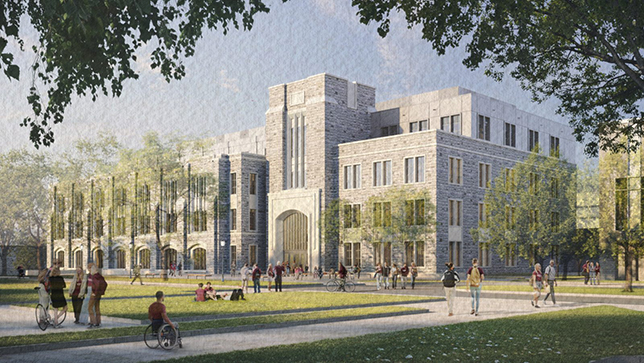Virginia Tech to Start Construction on New College of Engineering
Virginia Tech in Blacksburg, Va., recently announced that it has selected global construction and development firm Skanska to build a new 285,500-square-foot facility for the College of Engineering, according to a news release. Mitchell Hall will stand five stories and take the place of the existing Randolph Hall, which is scheduled for demolition in spring 2024. After completion, Mitchell Hall will increase gross square footage by 70 percent within the same footprint and be the largest building on campus.

Rendering courtesy of Skanska
Construction will work around the university’s existing stability wind tunnel, one of the largest of its kind in the country. The building’s exterior will feature a mix of glass, precast concrete, and Hokie Stone. The interior will feature amenities like a 200-person, arena-style lecture hall, academic and administrative space, a flex research lab, and workspaces. The building will also play home to multiple departments within the College of Engineering.
“This project underscores our commitment to delivering cutting-edge academic facilities that inspire innovation and collaboration,” said Mark Balling, executive vice president with Skanska. “We have worked on many other projects at the university, and we are delighted to continue our partnership as we execute this transformative vision for engineering education.”
Construction has an estimated completion date of spring 2028, the news release reports.
About the Author
Matt Jones is senior editor of Spaces4Learning. He can be reached at [email protected].